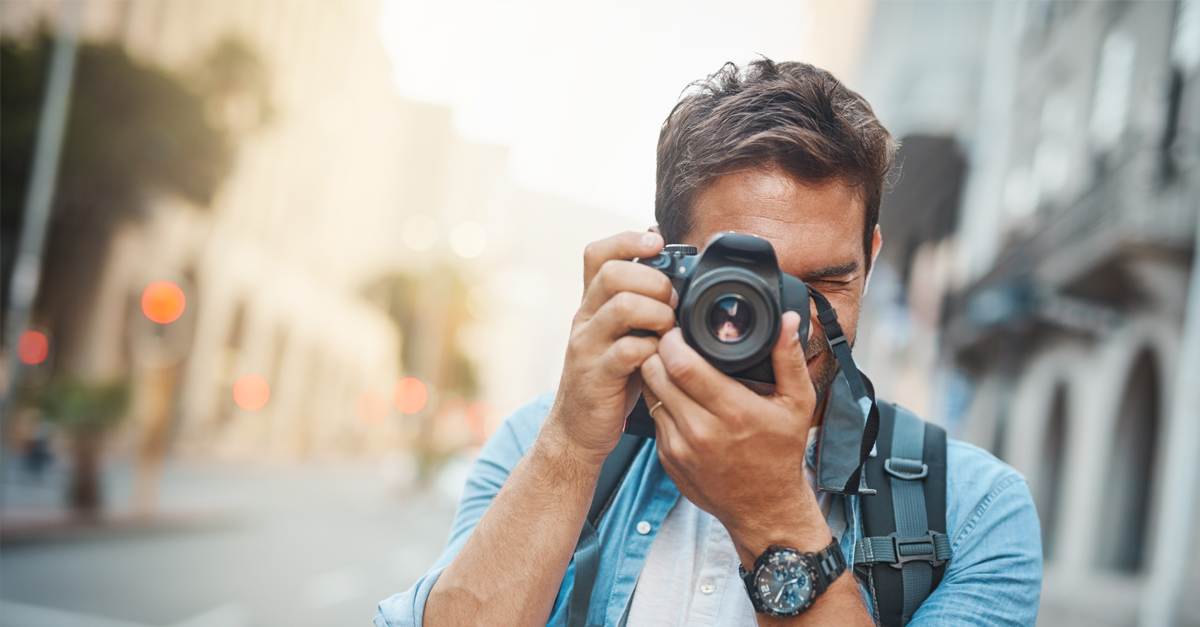One of the toughest things for many of us to do with a camera is to point it at a total stranger and take his/her picture. But it’s worth getting over your hesitation—you’ll open up a new world of photo possibilities, and you’ll never run out of unique and interesting photos to take. Photographing strangers is one aspect of street photography, and it can be so engaging that it becomes a lifetime hobby.
If you’re traveling, for instance, everyone but your travel companions will be a stranger. And those locals are often the most interesting part of any trip. Even around your own town, capturing portraits of people doing everyday things like shooting baskets or sitting in a park at dusk with their dogs can yield beautiful images—and maybe new friends.
One reason we’re often reluctant to photograph people we don’t know is that we fear a negative, even hostile, reaction. But most people don’t mind when you want to capture a genuine and attractive moment. The trick is to know when to just start clicking the shutter—and when to ask permission.

When to Shoot First
There are two ways to photograph strangers—shoot first or ask first. If you’re in a busy setting like a farmer’s market or a lively urban park, shooting “candids” is perfectly legitimate. There are always plenty of people with smartphones and cameras, and most people don’t think twice about someone snapping photos without asking. Tip: Use a moderately long telephoto lens so you capture individual portraits or small group shots from a distance. Don’t hide what you’re doing, but situate yourself in an out-of-the-way spot so that you’ll blend into the surroundings.
Of course, some people don’t want to be photographed. Maybe that couple holding hands on the beach just wants a private moment. If someone seems perturbed that you just photographed them—and it’s rare, in my experience—just smile and wave. (No one has ever asked me to delete a photo, but I would do so to defuse a situation if necessary.) Whatever you do, don’t try to hide your camera, which can put people on edge.
When to Ask Permission First
There are other times when photographing a stranger is more of a one-on-one (or one-on-two-or-three) situation, and because you need to be at least somewhat close up, the only way to get good photos is to politely acknowledge your intention first. This is particularly important when it comes to children—I never photograph kids unless the parent or caregiver is there and I get permission, even if it’s just a thumbs up.

But if you encounter an adult doing something specific—fishing at a beach, for instance—all it usually takes is a friendly comment or question (“Having any luck?”) to begin a conversation and then ask for their permission to shoot.
Having a photo series or project in mind can also break the ice. Decide that you want to get some great photographs of street vendors, for example, and then go out and tell your potential subjects you’re working on a personal creative project. Most people are thrilled to be part of an art project. I recently had an assignment to photograph seniors at a senior center, and one of the things I did was go to the basement pool room and ask the guys playing if they minded my shooting while they played. Within a few minutes, I was able to say things like, “Hold that pose for just a second!” and people were interrupting their pool games to help me get some good shots—and these were people I’d never met before. It was a blast.
Photographing people in foreign lands often adds a logistical wrinkle—the language barrier. If you find yourself in a situation where you want to take a close-up of a particularly interesting person or group, the simplest approach is to point to your camera and ask “OK?” It doesn’t hurt, however, to learn a simple phrase or even just the word “photograph” in the local language. In Italy, for example, a friendly smile and the request “Fotografia?” will usually get you a return smile and permission.
Tip: To do good street photography, you need to work quickly and confidently. Digging around in a camera bag or looking confused by your camera’s settings puts the focus on you and ruins any sense of spontaneity. If it helps, put your camera into its most-automatic mode and then just shoot. It’s better to get a shot that needs minor editing than to miss a moment.
Getting Comfortable Photographing Strangers
Start by photographing people you know. The more you shoot friends and family, the more at ease you’ll feel when it’s time to photograph strangers.

Next, throw yourself into crowds. I’ve spent many afternoons hanging out in Times Square in New York City trying to single out interesting faces and moments from the crush of people around me. Tip: If I spot someone particularly interesting or wearing an outfit that is obviously from another culture, I’ll often offer to take photos of that person with that person’s camera and only then ask if I can shoot one with my own camera. So far no one has ever said no.
A tip about tipping: If you’re photographing someone who makes a living selling items to tourists, it’s a nice gesture to buy something small as a thank you. The same is true when it comes to photographing street performers—you really should tip them. I was able to get a wonderful five-minute session photographing a mime in Paris by putting a five Euro tip in his umbrella before I asked permission to shoot. If you’re traveling with a guide, particularly in a somewhat exotic location—say, a camel auction in Egypt—ask your guide to negotiate a small fee for a great photo opportunity.


